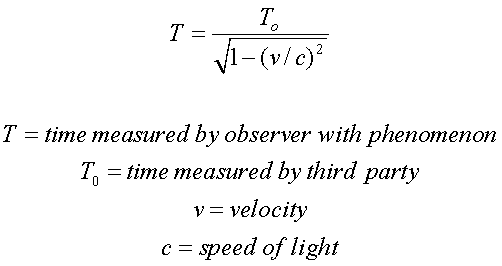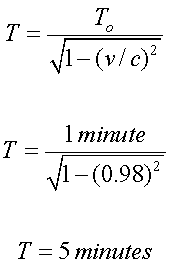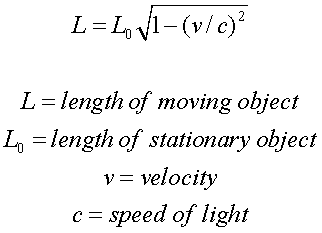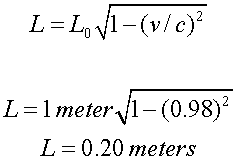Relativity is the effects of Gravity to Space-Time.
Relativity is also the reactions of matter as they
approach the speed of light. In regards to matter,
two very curious things occur as the speed of light
is approached:
- Time is affected
- Length is affected
These two effects are called Lorentz
Transformations.
Time is affected when the speed of light is
approached. To determine this, use the Lorentz Time
Transformation:

As an example, imagine Bob watching
a phenomenon and Bill is traveling with the
phenomenon. Bob sees Bill traveling at 0.98 times
the speed of light for 1 minute:

According to Bill (traveling with
the phenomenon), 5 minutes past on his watch while
Bob saw the phenomenon lasted only 1 minute.
The same effects occur with the
apparent length of an object:

Bob measures an object at rest to be
1 meter in length. He sets the object in motion at
0.98 times the speed of light, then measures while
the object is moving:

Bob notices the object is only 0.20
meters when he measured it moving.
So to an observer, when an object is
traveling near the speed of light, the phenomenon
appears to move much faster and appears to be
shorter than the same phenomenon at rest.
Back to Top
|

